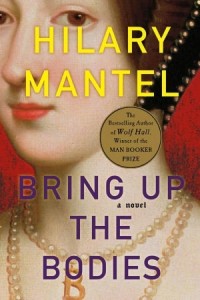I’ve pulled out my copy of The Epicure’s Almanack for this post. This will appear to ramble a bit, but it’s only an illusion, K?
Rambling….
The Blind Beggar of Bethenal Green described as “a house of entertainment” Let’s put that in oh, riiigght. Entertainment.
tossing up piemen “that attend executions, fairs, boxing-matches, and other polite assemblies.” Category: local color (apparently it was a thing to toss a coin and allowing the vendor to call heads or tails. Free pie if the customer won. If the vendor won, he kept the money and the pie.) This was also called “tossing the pieman.”
Plympton’s Pastry shop: Category: local color. Although we think of pasty shops as a place to buy things with sugar in them, Plympton’s sold sweet and savory pastries.
A ham and beef shop: Category: puzzling. Why ham and beef? Why not ham, beef, and veal?
Eating House: Category: vernacular. Not a restaurant, but an “eating house.” Even so, some of these eating-houses had accommodations upstairs. One displayed a variety of meats in the window.
Hyde Park Coffee House, Hotel and Tavern: Category: Regency Starbucks. Located at 242 Oxford Street. Commanded a view of Hyde Park and the hills of Surrey
Copping’s Ham and Beef Shop: Category: less puzzling now. 178 Oxford Street. “A good mart for purchasing those articles, and tongues ready drest, by weight, to carry away with you, which you must do, since there are no eating-rooms attacheed to the shop. Mr. Copping has acquired fame by the sale of his excellent plum puddings.”
There’s more than Gunters!
The Prince Regent’s famous confectioner, Monsiuer Parmentier, had a shop (“emporium”) at No.9 Edward Street. At 29 Duke Street was the emporium of Signor Romualdo. The nobility ordered supplies from these two places. In this area [Mayfair] there are china and glass shops that on “a few hours notice” could “furnish a splendid equipage for tea and turn out, as well as all the moveables and ornaments for large rout parties.”
Our author, Mr. Ryland, in this book, is having us on. He describes a party at the Earl of Shrewsbury’s new, but empty, house. A party that, alas, did not actually happen as descried. The local emporiums, he says, completely furnished the house from a room ablaze with light — lots of chimney glass — and another “somber” room decorated so as to resemble an Acadian grove. “It was filled with orange and lemon trees in full bearing, myrtles, and a great variety of odoriferoius shrubs and plants, in part natural and in part artificial, tastefully disposed and arranged in gradins.”
I had to look up gradin, but it’s what you’d suspect: an arrangement of tiered seating– in this case for the plants.
Impressions
It makes sense, when you think about it, to have someone supply the china, glasses, and silverware for a large party. Otherwise, the family china might disappear, be damaged or broken. When I planned my parents’ 50th wedding anniversary party, I found a place that would deliver the correct number of place settings, dishes, etc. And they came the next day to take away the dirty dishes, too. Boy, was that nice!
What I find fascinating about this is the dozens of clues about what London was like — A London I wish we saw more of in the pages of books. Eating-houses, dozens of “ham and beef” shops, where you might, or might not, be able to sit down and eat your purchase. And all around Mayfair, shops to cater to the wealthy. Things feel close together for us because, well, relative to what it can be like in the US, you didn’t hop in your car (or the metro) and zip across town and back to run your errands. You walked, rode a horse, or drove a carriage. For us, Regency London would be smaller in every way, more condensed and compact.
Ironically, I just moved my WIP out of London and into the countryside.
Has your vision of London changed at all?






